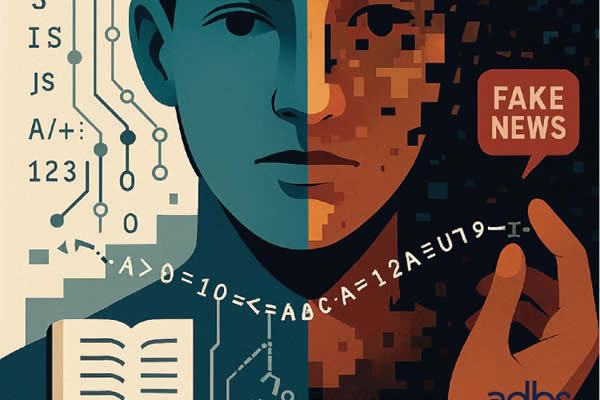The rapid spread of disinformation and AI-generated content presents both a challenge and an opportunity for journalism. As artificial intelligence technologies create plausible but unverified information, the role of journalists as gatekeepers of truth has never been more important.
In an era where misinformation and disinformation spread rapidly, and artificial intelligence generates content that blurs the line between fact and fiction, journalism is facing new challenges that are closely linked to these developments. However, it also presents an opportunity: to reaffirm its crucial role in guiding the public through an increasingly complex landscape.
A commitment to truth has always been at the core of journalistic ethics, enshrined in principles such as the 1971 Munich Charter, which stresses respect for truth as a fundamental right of the public. But this commitment is increasingly difficult to uphold in an environment where speed and sensationalism often take precedence over accuracy.
The erosion of trust and the role of social media
Public trust in journalism is in decline, influenced by economic pressures on newsrooms, the rapid pace of digital publishing, and the increasing overlap between opinion and reporting.
While social media have become a primary source of news for many, their role in shaping public understanding is complex. Unlike traditional journalistic institutions, which operate within editorial frameworks designed to uphold accuracy and accountability, social media platforms prioritise engagement. Their algorithms amplify content based on its potential to capture attention rather than its reliability, contributing to an environment where virality often outpaces verification.
Researchers Claire Wardle and Hussein Derakhshan classify information disruptions into three categories:
- Misinformation: False or misleading information that is unintentionally shared.
- Disinformation: Deliberately falsified or manipulated information designed to deceive.
- Malinformation: Truthful content distorted or used maliciously to cause harm.
These categories illustrate the complexity of today’s (dis)information landscape. In addition, propaganda, conspiracy theories and the concept of ‘alternative facts’ further undermine the public’s ability to distinguish between truth and manipulation. The algorithmic nature of social media platforms exacerbates these problems, reinforcing pre-existing beliefs and limiting exposure to diverse perspectives.
AI: both a threat and a tool for journalism
Artificial intelligence has become a major player in the (dis)information landscape, complicating the traditional understanding of facts. AI-generated content can be highly persuasive, but it does not operate with a concern for truth. Large language models such as ChatGPT produce plausible narratives based on vast amounts of training data, but they can also generate misleading or outright false information – sometimes referred to as ‘artificial hallucinations’.
At the same time, AI offers valuable tools for journalism, particularly in fact-checking. AI-powered algorithms can analyse large data sets, identify inconsistencies and spot misinformation on a scale beyond human capacity. However, their use requires careful oversight, as over-reliance on AI can introduce new biases and ethical concerns.
The responsibility of journalism in a post-truth era
The challenge for journalists today goes beyond fact-checking; it is also about rebuilding public trust in the media.
Journalism has always navigated different categories of facts:
- Objective facts: Empirically verifiable data, such as election results or casualty figures.
- Interpretive facts: Data whose meaning depends on context, such as economic policies evaluated through different ideological lenses.
- Institutional facts: Realities shaped by legal or social frameworks, such as international treaties
With the advent of generative AI, it now deals with a fourth type of fact:
- Emergent facts: AI-generated information that may not correspond to reality, but still influences public perception.
While absolute objectivity may be unattainable, journalism remains essential to provide rigorous verification, contextual analysis and ethical reporting. The growing influence of AI and social media-driven mis- and disinformation makes it even more important for journalists to uphold accuracy, transparency and accountability. In increasingly polarised societies, the challenge will also be to rebuild public trust and ensure that journalism remains a unifying force for informed debate. Another challenge is to deal with AI technology as a part of the problem and a part of the solution.




